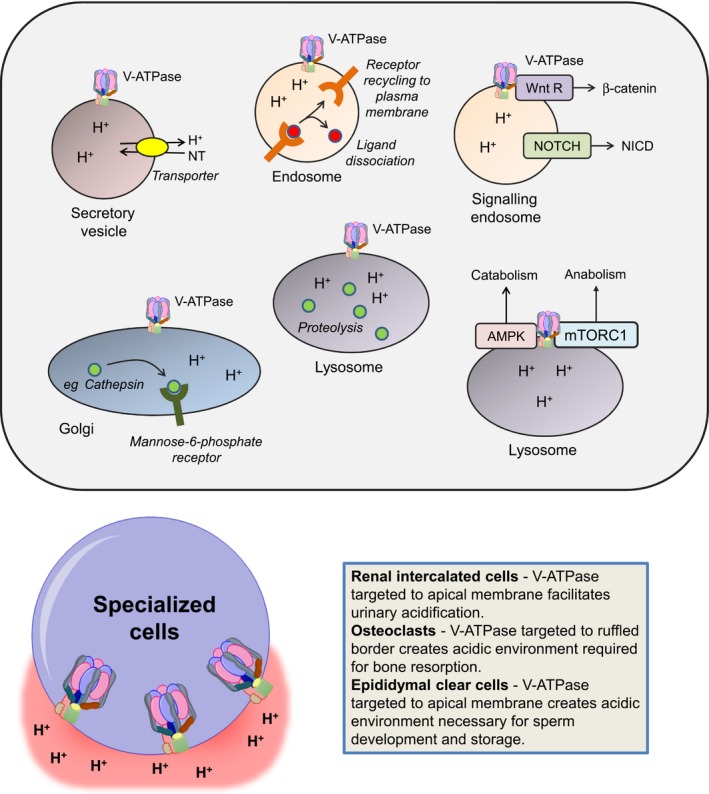Figure 2.

V‐ATPase function. A, Intracellular V‐ATPase regulates multiple intracellular processes. In secretory vesicles, V‐ATPase generates a proton gradient that is used to drive the H+‐dependent uptake of neurotransmitters. In endosomes, low pH promotes the dissociation of ligands, such as low density lipoproteins, from their receptors, facilitating receptor recycling to the plasma membrane. In signaling endosomes, V‐ATPase promotes signaling to β‐catenin downstream of Wnt receptors, and can promote NOTCH signaling via enhanced cleavage to generate NICD. In the Golgi, V‐ATPase promotes binding of hydrolases to the mannose‐6‐phosphate receptor which is important for their delivery to the lysosome. In lysosomes, low pH is required for optimal activity of acid‐dependent proteases, such as cathepsins. Lysosomal V‐ATPase also acts to coordinate activity of AMPK and mTORC1 to regulated cellular catabolism vs anabolism in response to shifting microenvironmental cues. Note the figure is designed to illustrate some key functions of V‐ATPase and is not intended to portray all of the diverse functions that have been ascribed to V‐ATPase. B, Plasma membrane functions of V‐ATPase in specialized cell types including renal intercalated cells, osteoclasts, and clear epididymal cells
